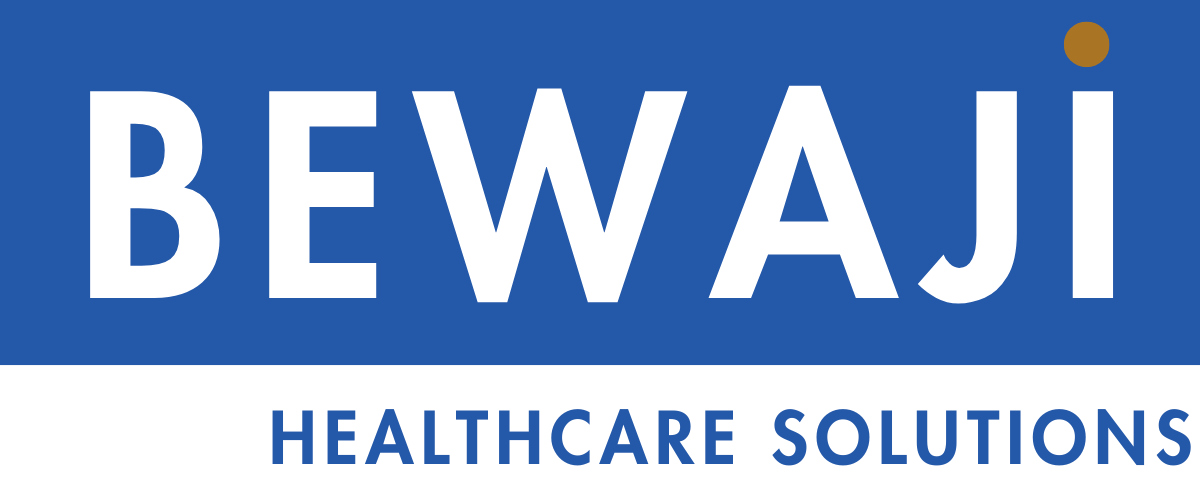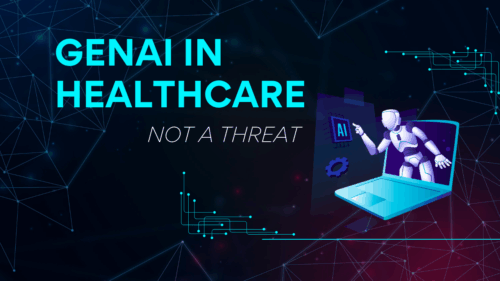Mark is a regional healthcare network CEO. Faced with rapid industry changes and the challenge of maintaining a competitive edge, he grapples with a fragmented system where each facility operates in isolation, resulting in inefficiencies and a disjointed patient experience.
His IT infrastructure is outdated, leading to poor data management and slow adaptation to market demands. Financial pressures add to his anxiety, making it clear that a comprehensive and unified strategy is imperative for the organization’s survival and growth. As C.S. Lewis noted, “Hardships often prepare ordinary people for an extraordinary destiny.” This is Mark’s moment to turn adversity into a transformative success.
Conducting a Comprehensive Healthcare Assessment
The first step in Mark’s journey towards a unified operational strategy is to conduct a meticulous assessment of the current state of his network. This comprehensive review will uncover the inefficiencies and gaps that need addressing.
Operational Review
Mark begins by conducting a thorough operational review, analyzing the workflows and processes in each facility under his management. This analysis is critical for identifying inefficiencies and redundancies. Each facility’s unique processes are mapped and assessed to highlight areas where improvements can be made. This operational review is not merely a cursory glance but a deep dive into the mechanics of each facility, aiming to create a seamless healthcare network integration.
IT Infrastructure Audit
Next, Mark turns his attention to the existing IT systems. An audit reveals significant gaps in integration and numerous outdated systems that hinder operational efficiency and data management. Modernizing these systems is a top priority to support a unified healthcare strategy. Effective healthcare IT infrastructure is the backbone of any modern healthcare system, enabling seamless data sharing and communication across the network.
Financial Analysis
A comprehensive financial analysis provides insights into the organization’s cost structures, revenue streams, and economic constraints. This analysis is crucial for identifying cost-saving opportunities without compromising the quality of patient care. Understanding the organization’s financial health is fundamental to ensuring long-term healthcare financial sustainability.
Stakeholder Engagement
Engaging with key stakeholders is another essential step. Mark gathers insights from staff, patients, and management to understand their needs and expectations. This engagement is facilitated through surveys and focus groups, providing a broad spectrum of feedback critical for developing a responsive and effective healthcare strategy. Listening to the voices of those interacting with the healthcare system daily helps identify pain points and areas for improvement.
Developing a Unified Strategic Vision
With a thorough assessment in hand, Mark can now develop a strategic vision that aligns with the organization’s goals and values. This vision will serve as the foundation for all future initiatives and transformations.
Define Objectives
Mark sets measurable goals for improving operational efficiency, enhancing patient care, and integrating advanced technologies. These objectives are aligned with the broader organizational goals, ensuring that each initiative supports the mission of delivering high-quality healthcare services. Key performance indicators (KPIs) such as patient satisfaction scores and operational cost reductions are established to measure progress towards these goals.
Align with Core Values
Ensuring that the strategy aligns with the organization’s core values is crucial. The focus is on delivering high-quality patient care and achieving operational excellence. Patient-centered care is emphasized as a core value, guiding all strategic decisions and ensuring that every initiative enhances the patient experience.
Create a Roadmap
The next step is developing a detailed implementation roadmap. This roadmap outlines short-term and long-term goals, key milestones, and responsibilities. It includes flexibility to adapt to changing circumstances and new opportunities, ensuring the strategy remains relevant and responsive to the evolving healthcare landscape.
Standardizing Healthcare Processes
Mark must standardize processes across all facilities to achieve a cohesive and efficient healthcare network. This standardization will ensure consistency and operational efficiency.
Establish Common Practices
Mark establishes standard operating procedures (SOPs) for patient care, administrative functions, and operational processes. These SOPs ensure consistency across the organization, helping to eliminate variations that can lead to inefficiencies and fragmented care. Adopting these practices across all facilities helps create a unified approach to healthcare delivery.
Implement Best Practices
Industry best practices and evidence-based protocols are adopted to streamline operations and improve patient outcomes. Training staff on these new processes is essential to ensure everyone understands and adheres to the standardized procedures. Continuous support and feedback mechanisms are implemented to address any challenges during the transition.
Integrating Advanced Healthcare Technologies
Integrating advanced technologies is critical for transforming healthcare delivery and operational efficiency. Mark focuses on several key areas to achieve this integration.
Unified IT Platform
Mark transitions to a unified IT platform that supports seamless data sharing and communication across all facilities. This platform provides a centralized system that enhances coordination and improves data accuracy. Implementing a centralized electronic health record (EHR) system is also a priority, ensuring that patient data is accurate and accessible and supports better decision-making and continuity of care.
Data Analytics and Business Intelligence
Data analytics tools are implemented to gain insights into patient care trends, operational performance, and market opportunities. Developing a comprehensive data management strategy allows for informed decision-making and continuous improvement. Leveraging these technologies helps Mark better understand the organization’s strengths and weaknesses, guiding strategic initiatives that drive improvement.
Fostering a Culture of Continuous Improvement
To sustain the transformation, Mark must foster a culture of continuous improvement within the organization. This culture encourages ongoing learning and adaptation, which is essential for long-term success.
Training and Development
Investing in ongoing training and development is crucial. Staff are provided with the latest knowledge and skills to deliver high-quality care and support the organization’s goals. Promoting a learning culture encourages staff to continuously enhance their skills and expertise, contributing to the organization’s success.
Performance Monitoring
Establishing a system for monitoring key performance indicators is essential for tracking progress and identifying areas for improvement. Regular reviews of these metrics allow Mark to make informed decisions that drive continuous improvement and ensure the organization remains on track to achieve its strategic goals.
Implementing Change Management Strategies
Effective change management is critical for the successful implementation of the new strategy. Mark focuses on communication, support, and feedback to facilitate this process.
Communication Plan
A comprehensive communication plan is developed to keep all stakeholders informed and engaged throughout the transformation process. Utilizing various communication channels ensures everyone knows the changes and understands their roles. Effective communication is key to overcoming resistance and ensuring smooth transitions.
Change Champions
Identifying and empowering change champions within the organization helps facilitate the transformation. These individuals advocate for the changes and support their colleagues in adapting to new processes and technologies. Providing these champions with the necessary resources and support is essential for their success.
Feedback Mechanisms
Creating feedback loops to gather input from staff and patients ensures that the strategy remains responsive to their needs. Acting on feedback and making necessary adjustments helps maintain alignment with the organization’s goals and improves patient care.
Monitoring and Evaluating Progress
Regular monitoring and evaluation are crucial for sustaining the transformation and ensuring continuous improvement.
Regular Reviews
Conducting regular performance reviews helps assess the strategy’s effectiveness and identify areas for further improvement. Tracking key performance indicators allows Mark to compare progress against industry benchmarks and highlight areas where additional efforts are needed.
Benchmarking
Benchmarking performance against industry standards provides valuable insights into how the organization compares to its peers. This data informs the adoption of best practices and drives continuous improvement, helping the organization stay ahead in the competitive healthcare market.
Securing Financial Sustainability
Ensuring financial sustainability is crucial for the long-term success of the healthcare network. To achieve this goal, Mark focuses on cost management and revenue optimization.
Cost Management
Identifying cost-saving opportunities without compromising the quality of care is essential. Regular financial performance reviews ensure that the organization remains financially healthy and can invest in future improvements. Cost management strategies include optimizing supply chain management and reducing waste.
Revenue Optimization
Exploring new revenue streams, such as value-based care models, helps ensure financial stability and growth. Improving existing revenue streams through better billing processes and increased patient throughput enhances the organization’s economic performance. Mark also looks for innovative ways to generate additional revenue to support ongoing operations and future expansion.
Key Steps to Implementation
Initiate a Pilot Project
Starting with a pilot project in a select facility allows Mark to test new processes and technologies before a full-scale rollout. This approach helps identify challenges and refine the implementation plan, ensuring a smooth transition when changes are implemented across the network.
Form a Steering Committee
Establishing a steering committee with representatives from key stakeholder groups ensures alignment with strategic goals and oversees the implementation process. This committee provides guidance and support throughout the transformation, helping to maintain focus and direction.
Develop a Phased Approach
Implementing changes in phases helps manage risks and ensures smooth transitions. Each phase is evaluated for success before moving to the next, allowing time for staff adaptation and ensuring that the organization can respond effectively to any challenges.
Conclusion
A unified strategy integrating modern technology and standardized processes is essential for Mark’s healthcare network to improve efficiency, enhance patient care, and maintain competitiveness. Mark can lead his organization through a successful transformation by systematically assessing current operations, aligning strategic objectives, and leveraging advanced technologies. This approach will help align all facilities under a unified vision, streamline operations, and ensure the organization is agile enough to adapt to future industry changes. Focusing on comprehensive assessment, strategic alignment, technology integration, and continuous improvement will position Mark’s healthcare network to thrive in the competitive healthcare market.
By embracing a unified strategy and integrating modern technologies, Mark sets a precedent for excellence in healthcare management and patient care. His journey underscores the importance of resilience and strategic foresight in navigating the complexities of the healthcare landscape.



